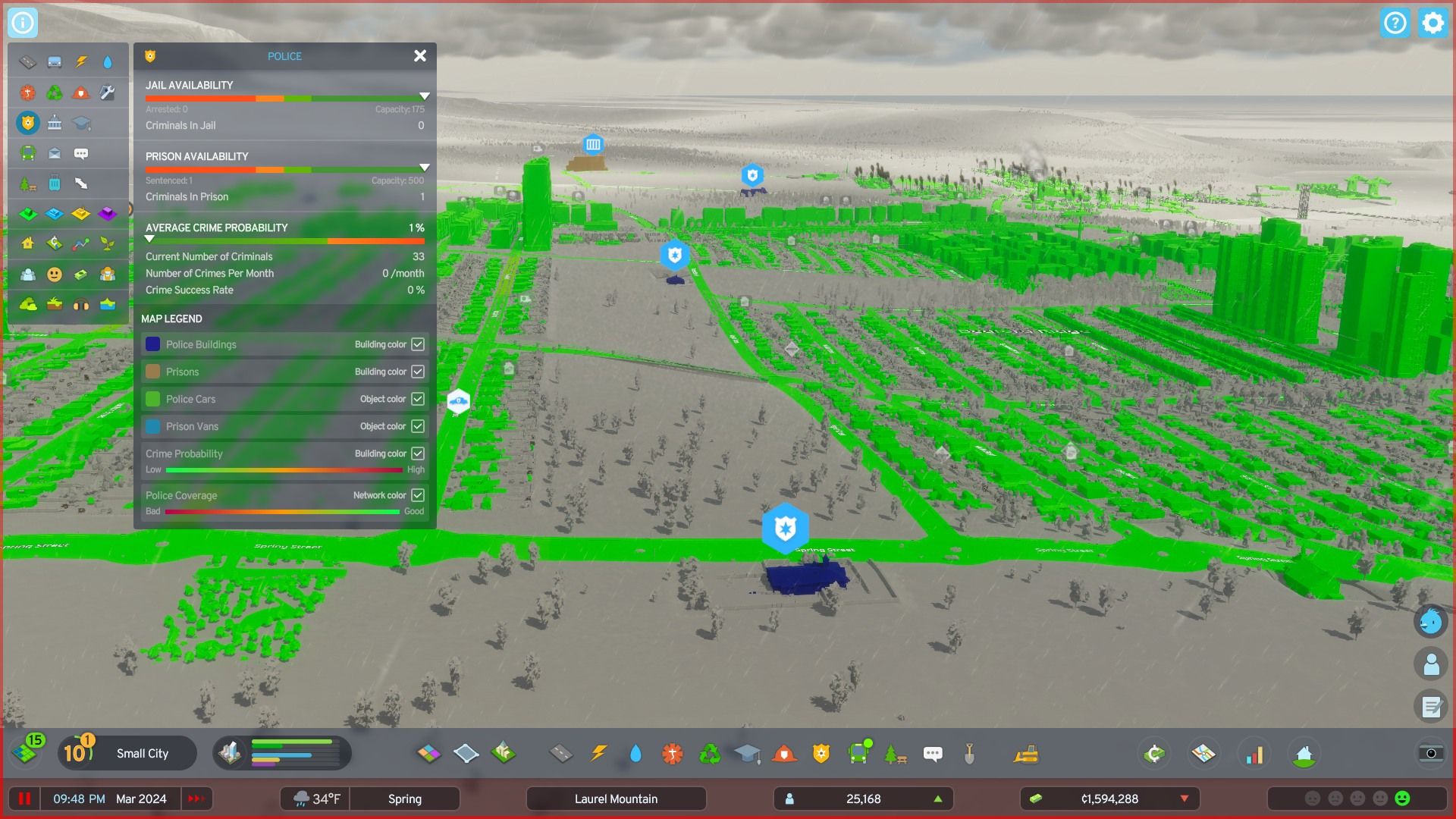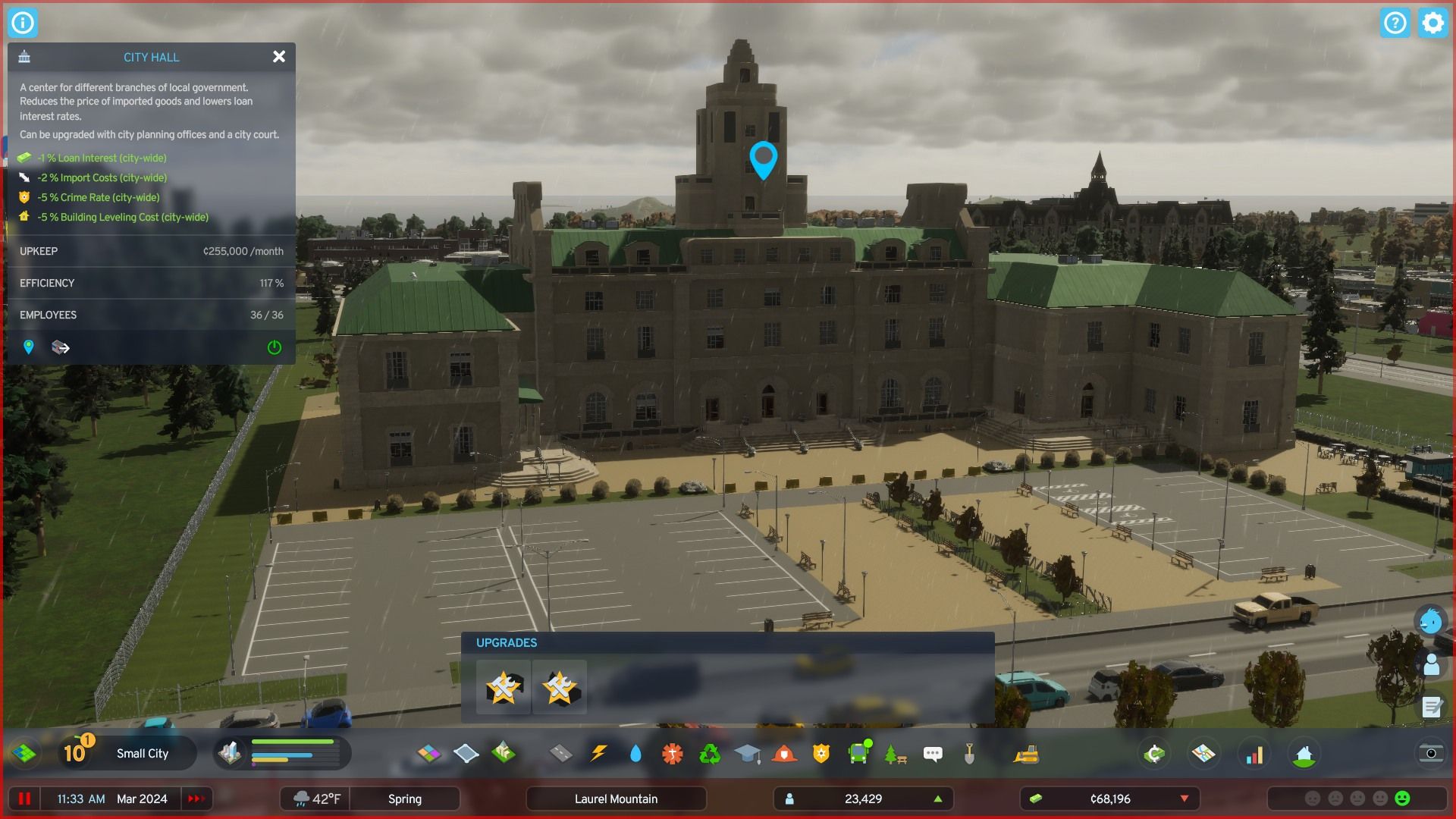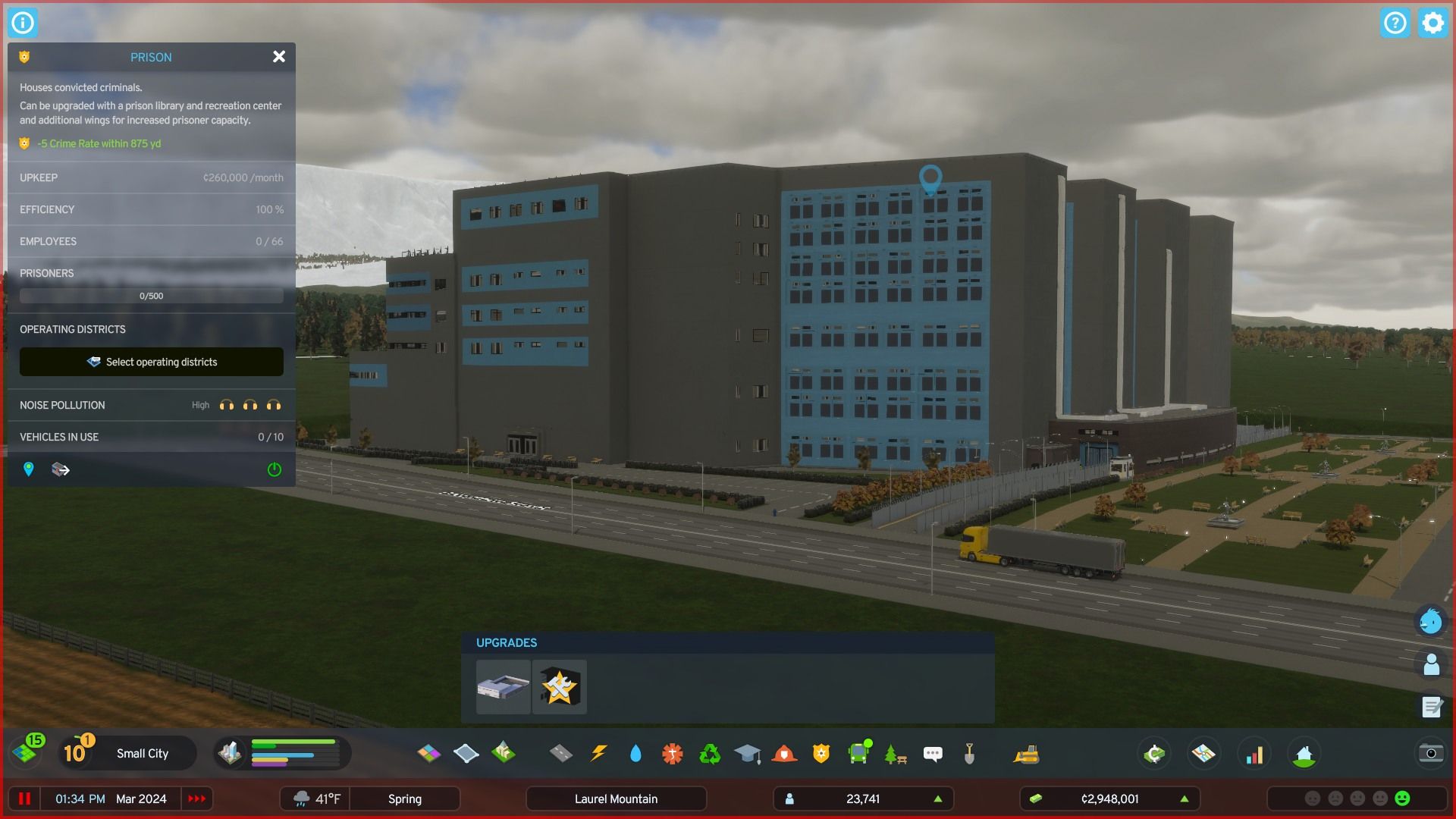
Curbing Crime in Cities: Skylines 2

Master the art of reducing crime in Cities: Skylines 2! Learn the perfect balance between effective policing, welfare initiatives, and managing jails and prisons Will you be hailed as the mayor who triumphs over crime?
In Cities: Skylines 2, maintaining a peaceful city requires effective crime prevention strategies. This entails constructing multiple police stations that dispatch patrol cars to monitor criminal activity, apprehend offenders, and ensure the safety of residents.
However, tackling crime in Cities: Skylines 2 is a multifaceted endeavor. It involves more than just relying on the police force. Implementing a well-functioning administration and welfare system can significantly contribute to crime reduction. Players must utilize various structures from the Police and Administration sectors to eliminate any opportunities for criminals to thrive. Here's a guide on maintaining tranquility in your cities within the game.
Policing and Crime Basics
After achieving milestone three, players will gain entry to police and administration buildings. As a result, the police station will be unlocked and accessible for free, while access to other facilities will require the use of development points.
Similar to other amenities, players have the ability to position the police station alongside any non-highway road. By doing so, the road network adjacent to the station will turn green, indicating the proximity to police support. This visually represents the speed at which law enforcement can react to criminal activity. Players will witness patrol cars on the green roads as they diligently uphold city safety. It's worth noting that heavy traffic can hinder the efficiency and response time of the police force.
In the Police and Administration development tree, players have the opportunity to acquire the Police Headquarters building by spending two development points. While the cost of constructing and maintaining this building is significantly higher than that of a regular station, it offers a range of benefits such as an extensive fleet of patrol cars and a considerably wider coverage area. Moreover, players have the option to enhance the capabilities of the headquarters by upgrading it, which includes adding more patrol cars, increasing the capacity of the jail for criminals, and incorporating a helipad for aerial surveillance.
Despite these advantages, it is still advisable for players to strategically position a few stations in close proximity to the headquarters. The efficiency of the police force relies on smooth traffic flow, enabling them to promptly respond to ongoing crimes and apprehend offenders. Frequent traffic congestion and poorly maintained roads can elevate the Crime Success Rate, resulting in citizens expressing dissatisfaction with the prevailing crime situation, even if the overall crime probability is as low as 1%.
Welfare and Administration
The Police and Administration tree has two branches. One branch leads to the Police Headquarters, while the other starts with a Welfare Office and leads to City Hall. This relationship is important for policing and crime prevention because individuals who are not impoverished and desperate are less likely to engage in criminal activities. Therefore, players can also reduce crime by addressing its underlying causes.
Compared to a police station, the construction cost of a welfare office is lower. However, its maintenance cost is higher, and it does not offer any upgrades. Nonetheless, the welfare office has a wide service area and the ability to improve the overall well-being of all residents within its range. Well-being encompasses various factors such as entertainment, rent, and education. By preventing households from falling into unhappiness and criminal behavior, the welfare office plays a crucial role. Furthermore, unlike the police, it does not rely on traffic flow and only needs to cover residential buildings.
City Hall serves as another valuable building in the city. It offers a marginal decrease in loan interest rates and utility import costs. Additionally, players can enhance City Hall with upgrades that result in lower upgrade expenses for other buildings. Moreover, it contributes to a 5% reduction in the crime rate across the entire city. Similar to the welfare office, City Hall does not contribute to traffic congestion; however, players are limited to constructing only one City Hall per city.
Jails and Prisons
Considering jail and prison space is the final aspect to take into account. Every police station and headquarters is equipped with a jail, providing a space for detained criminals awaiting their trial. In Cities: Skylines 2, this is distinguished from prisons, where convicted criminals serve their sentences. A well-functioning city should allocate sufficient room for both types of inmates, even if effective crime prevention measures result in fewer prisoners requiring confinement.
In Cities: Skylines 2, the prison is the sole facility capable of accommodating prisoners. Players can gain access to the prison by accumulating four development points, following their initial unlocking of the police headquarters. The prison is equipped with its own vehicles for transferring prisoners from jails. It is worth noting that while the game permits criminals to transition into convicts even in the absence of a prison on the map, they cannot serve their sentence until they are placed in a prison.
Crime, punishment, and prevention play integral roles in Cities: Skylines 2. In smaller towns, one or two police stations may suffice to address these aspects. However, as players progress and reach milestone 10, for instance, they will need to introduce new buildings to effectively manage these dynamics.
Cities: Skylines 2 is available now on PC, PS5, and Xbox Series X/S.
Cities: Skylines 2
Platform(s) PC, PS5, Xbox Series X, Xbox Series SReleased October 24, 2023Developer(s) Colossal OrderPublisher(s) Paradox InteractiveGenre(s) City Builder
Editor's P/S
In the市長模擬遊戲《都市:天際線 2》中,警局是必不可少的建築之一。它可以降低犯罪率,並確保市民的安全。警局的建設和維護都需要花費資金,但它是值得的。一個良好的警局可以讓市民安心,並吸引更多的人來定居。
除了警局之外,玩家還可以通過其他方式來降低犯罪率。比如,建設福利機構可以幫助那些貧困的市民,讓他們有更好的生活條件,從而減少他們犯罪的可能性。此外,建設學校可以提高市民的教育水平,讓他們更有文化,從而減少他們犯罪的可能性。











